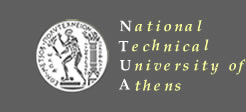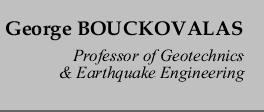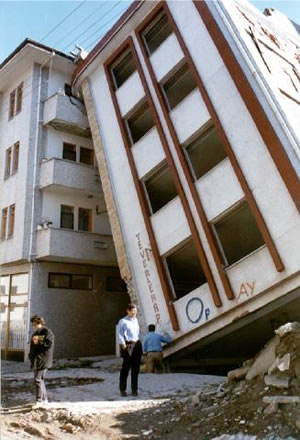



 |
 |
 |
 |
 |

|
GEOTECHNICAL EARTHQUAKE ENGINEERING
|
 |
||
General:
The aim of this course is to introduce students (selectively, due to time limitation) to the following common in practice problems of Geotechnical Earthquake Engineering:
A. The definition of seismic action for the design of buildings and geotechnical structures depending upon the prevailing soil and topography conditions. Related to this topic is the performance at Seismic Microzonation Studies for extended urban areas, a rather hot issue for countries of high seismicity.
B. The seismic design of retaining walls (walls of basements and underground structures, quay walls, gravity walls, etc.), including the computation of permanent displacements in the cone of failure. In addition to the conventional design method, the Performance Based Design (or PBD) will be addressed, which gradually becomes "standard practice" worldwide.
C. The seismic design of slopes and embankments. Emphasis will be given to the evaluation of the seismic coefficient, which is used for pseudo static design purposes, as well as to Performance Based Design (PBD) issues.
D. The seismic design of underground structures, such as tunnels and pipelines. Initially, the basic issues of seismic verification will be addressed, while the emphasis will be consequently placed upon the transient stresses and strains induced by seismic wave propagation.
Å. The evaluation of earthquake-induced liquefaction by means of Standard and Static Penetration Test (SPT & CPT) results. In addition, the consequences of liquefaction on soil strength and displacements (residual strength, lateral spreading and settlements) will be addressed, while methods will be presented for the mitigation of such detrimental effects (drain installation, vibro-compaction, etc.)
The lectures will complemented by historical events of ground related seismic failures. In addition the students will familiarize with numerical methods, which are used in practice for the analysis and design of seismic ground response.
Previous knowledge of dynamics and wave propagation theory will be of special help in comprehending the material of this course. Hence, students are strongly encouraged to renew relevant courses attended during the undergraduate studies.
Lecture Notes (in pdf format)
![]()